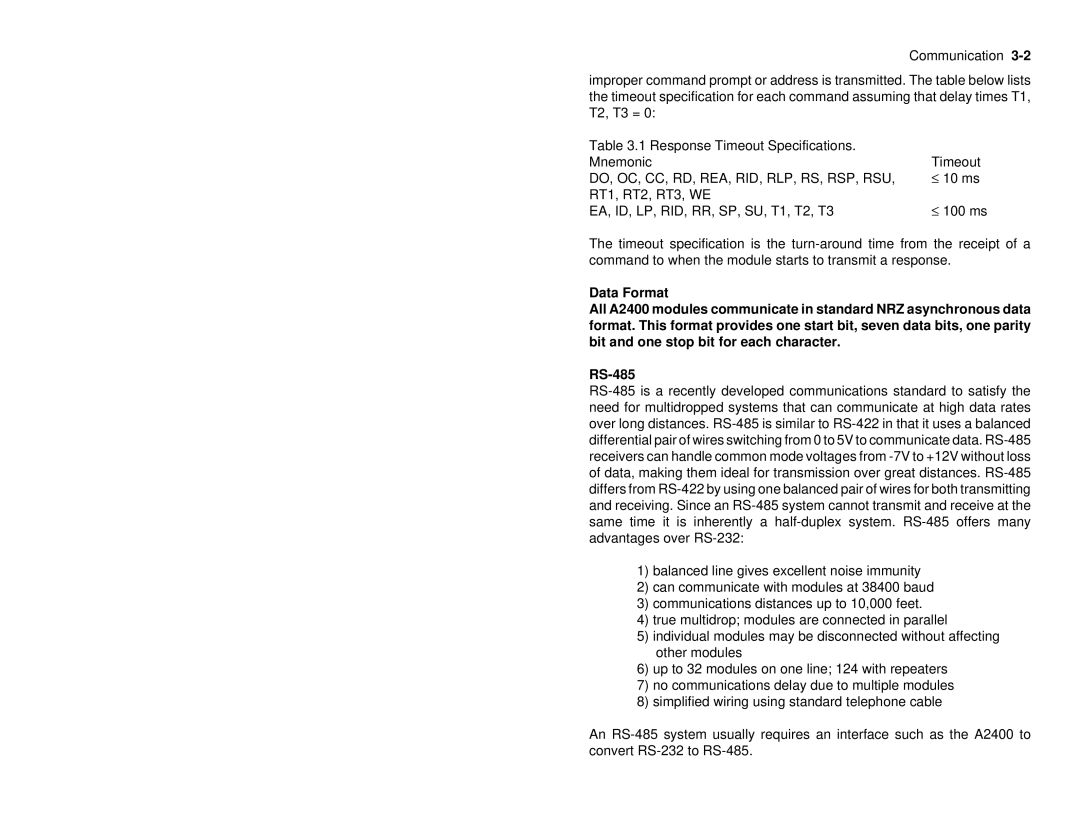Communication
improper command prompt or address is transmitted. The table below lists the timeout specification for each command assuming that delay times T1, T2, T3 = 0:
Table 3.1 Response Timeout Specifications. |
|
Mnemonic | Timeout |
DO, OC, CC, RD, REA, RID, RLP, RS, RSP, RSU, | ≤ 10 ms |
RT1, RT2, RT3, WE | ≤ 100 ms |
EA, ID, LP, RID, RR, SP, SU, T1, T2, T3 |
The timeout specification is the
Data Format
All A2400 modules communicate in standard NRZ asynchronous data format. This format provides one start bit, seven data bits, one parity bit and one stop bit for each character.
1)balanced line gives excellent noise immunity
2)can communicate with modules at 38400 baud
3)communications distances up to 10,000 feet.
4)true multidrop; modules are connected in parallel
5)individual modules may be disconnected without affecting other modules
6)up to 32 modules on one line; 124 with repeaters
7)no communications delay due to multiple modules
8)simplified wiring using standard telephone cable
An
